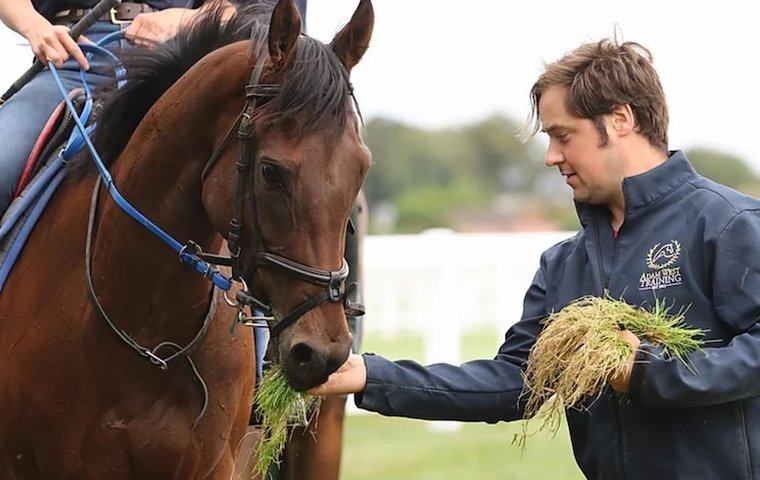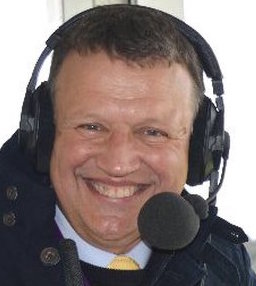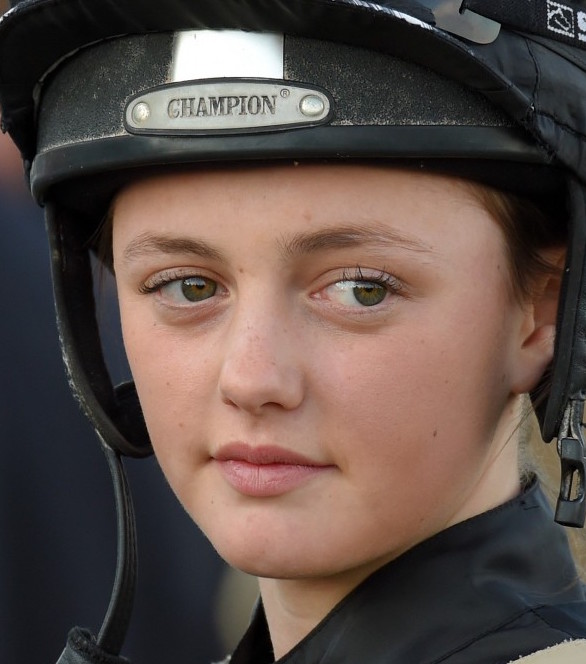
Another Covid-inspired lockdown has just begun in Britain, but for racing nothing much has changed - the sport is allowed to continue - without spectators - and there are strict limits on the number of owners who can attend to watch their horses run. Racing, of course, is still locking its wounds after the first lockdown, which closed racecourses for ten weeks until the start of June. So how did the participants cope with that shutdown, and what effects have the continuing restrictions had. Kate Johnson spoke to four of them.
That strange silence as Serpentine flew past the post on July 4 to win the Epsom Derby was an apt backdrop to a peculiar victory for jockey Emmet McNamara and trainer Aidan O’Brien on a uniquely different Derby Day.
 Was it as odd to be there as it was to watch on the television? Not for Richard Hoiles (left), ITV’s lead commentator, who says, “I’ve called lots of quiet Thursdays there. It was surreal that it was the Derby, but I’ve seen that track and infield empty plenty of times.”
Was it as odd to be there as it was to watch on the television? Not for Richard Hoiles (left), ITV’s lead commentator, who says, “I’ve called lots of quiet Thursdays there. It was surreal that it was the Derby, but I’ve seen that track and infield empty plenty of times.”
But it was certainly a little odd for Epsom Racecourse manager Simon Durrant, the man who “definitely did not want to be remembered as the person who didn’t run the Derby”. He watched the day’s racing from the Duchess stands and acknowledges, “It wasn’t the Derby we wanted to deliver, but the race was run. There wasn’t an electric atmosphere, there weren’t those smells, those noises, the funfair. But it was the first day the owners were allowed back, so there was some sense of occasion.”
And, crowds or no, “The 3-year-olds get one crack at this. We know this is the race they all - the horse, jockey, trainers - want to win.”
Epsom-based trainer Adam West is familiar with pressure. He felt the uncertainty from the moment the Prime Minister announced lockdown. “How long would racing be off? Would it ease off for a couple of weeks then go back to normal? Should you let horses down to minimal work, or turn them out in the field? You can’t develop a horse with stop-start - they’re tricky enough customers as it is.”
In the initial confusion, he lost some owners, specifically “small shareholders”. “Those with a 5-25 percent share were the first to jump ship as quickly as they could. We lost more horses coming out of training through small shareholders getting cold feet and not being able to go racing. Cruelly, they didn’t feel a responsibility to the horse because they only had a small share.”
The British Horseracing Authority estimates the cost of three months of suspended racing at £40 million, and the loss of revenue for racecourses for the year will come in at £250-300 million.
The Jockey Club, which operates 15 racecourses, including Aintree, Cheltenham and Epsom, has lost in excess of £75 million - and that’s with racing being one of the first major sports to return, albeit behind closed doors. This feat was, the BHA says, “Largely down to the industry working collaboratively to put in protocols that the Government and PHE [Public Health England] were comfortable with.”
Some of the mooted protocols are described by West as “horrific”. “There was an idea racecourses would open a hotel, and one lad [groom] from a different yard would look after four horses and be there for three days. I’m not sending my hoses with someone else’s lad! It’s dangerous; they don’t know my horse.”
No camaraderie
 When Adam West (left) returned to Chelmsford racecourse, having already completed health surveys, an online module and a health and safety questionnaire, he wasn’t allowed in until his temperature was taken and he’d completed a few more health-screening questions. And, after all that, “There was no eating together in the canteen. We ate in our horseboxes. There was no talking, no camaraderie, we were just there to work, rather than feeling the atmosphere of looking forward to the racing.”
When Adam West (left) returned to Chelmsford racecourse, having already completed health surveys, an online module and a health and safety questionnaire, he wasn’t allowed in until his temperature was taken and he’d completed a few more health-screening questions. And, after all that, “There was no eating together in the canteen. We ate in our horseboxes. There was no talking, no camaraderie, we were just there to work, rather than feeling the atmosphere of looking forward to the racing.”
Hoiles agrees. “Plumpton was my worst experience of commentating during the pandemic. I’m based in a box adjacent to the crowd. There was no-one there and I really missed them.”
The lack of atmosphere affects the horses too, for good or bad. West observes, “Some horses have taken advantage of racing being behind closed doors. No one was on the Downs for the Derby, there was no electricity, and those that normally get hot and go over the top and lose races because of the atmosphere have had the advantage of no cheering crowds. It’s a gentle introduction for the 2-year-olds, but the real test of a racehorse is in the crowds and the buzz. Enable loved her fans, and she hasn’t had anyone cheering her home this year. Has the top level of racing picked up on it? I think so.”
West can accept racing behind closed doors, but he’s quite sure owners won’t stomach it. “As much as the industries, studs and big yards run it as a business, 70-80 percent of these guys are doing it for pleasure, and if they can’t get that by going to the races and being social, it’s not going to happen. We need to start taking owners more seriously and not running it as a betting organisation.”
Hoiles was the race-caller for public trials at Doncaster and Warwick and, from the commentary box, he observed the crowd: older, smartly dressed and socially distanced. He notes the “unconfined joy of seeing familiar faces conversing, and those who stood together and never talked. It rammed home the social aspects of the sport. It was humbling to see a crowd with a lifelong shared enjoyment of something.”
 The shutdown wasn’t all bad. Apprentice jockey Rhiain Ingram (left) appreciated the unilateral halt. “Mentally, it was quite nice to have a break from all the stress,” she admits. “Normally, if you take two days off to chill, you’re still watching racing and thinking, ‘I could have ridden that, should I have been there?’. Your mind is always working.
The shutdown wasn’t all bad. Apprentice jockey Rhiain Ingram (left) appreciated the unilateral halt. “Mentally, it was quite nice to have a break from all the stress,” she admits. “Normally, if you take two days off to chill, you’re still watching racing and thinking, ‘I could have ridden that, should I have been there?’. Your mind is always working.
“If you take three days off, you could ride for all three, and the next three, when you want to work, you wouldn’t get anything. So you don’t want to take time off because you don’t want to miss anything. While there was no racing, you’re not worrying about what everyone else is doing or how well they’re doing.”
She took the time to focus on showjumping. “I’ve been wanting to do it for ages,” she says. “I love racing. It’ll always come before showjumping, but it’s never as easy as you want it to be and it never really goes the way you want it to.”
Hoiles agrees that the blanket ban made it easier. “It’s not as if racing was going on without you,” he says. He used the time to set up a media-training business with colleagues, including ITV Racing presenter Ed Chamberlin.
Welcome changes
Post-shutdown, some changes are welcome, such as the new rule that jockeys can only race at one meeting a day. West says it’s better for their mental health and Rhiain Ingram agrees that it not only takes away the stress of rushing from one meeting to the next, but jockeys can pick up more rides at one course, as other jockeys are committed elsewhere.
And adversity brings resilience. She returned with a “fresh, positive outlook and more enthusiasm.” And West says, “We were able to come together as a yard and it made us stronger as a team.” Simon Durrant is proud of the strengthened relationships that have come out of the collaborative effort between all stakeholders to make the Derby happen.
The BHA agrees: “The last six months have shown what can be achieved when racing works together,” it says.


